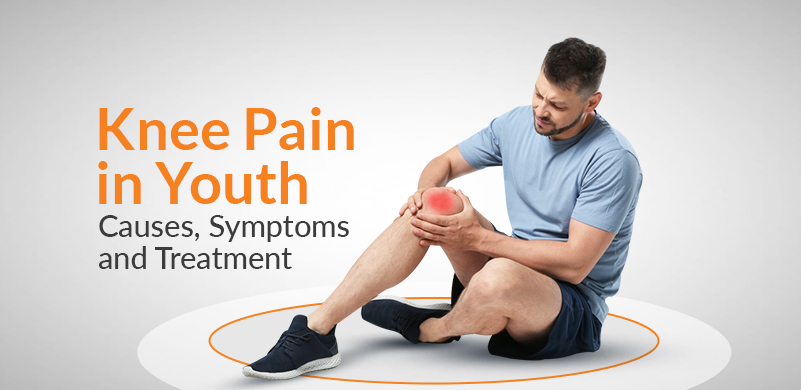© Copyright 2019. Regrow Biosciences Pvt Ltd. All Rights Reserved
Blog
© Copyright 2019. Regrow Biosciences Pvt Ltd. All Rights Reserved
Blog
Knee pain: Causes, Symptoms, and Treatment
18th November 2022

Knee pain is becoming an extremely common problem, especially in the younger population. Several reasons, such as wear and tear, or an injury, can cause knee pain. There are many different ways to treat knee pain, depending on the patient's cause and condition.
The knee is one of the largest joints in the body and is made up of three bones: the femur (thighbone), tibia (shinbone), and patella (kneecap). The ends of these bones are covered with articular cartilage. Cartilage is a tough but flexible connective tissue that allows the bones to glide over each other. The knee joint is held together by several ligaments and tendons that attach muscles to bone. The quadriceps tendon attaches the quadriceps muscle (the large muscle at the front of the thigh) to the patella. The patellar tendon connects the patella to the tibia. These tendons help to stabilize and move the knee joint.
The knee joint is surrounded by a thick layer of tissue called the synovium, which produces synovial fluid. This fluid lubricates and cushions the joint, allowing it to move smoothly. But did you know the most common cause of knee pain in the youth is cartilage damage?
As we age, our body undergo many changes. One of these changes is the deterioration of the cartilage in our joints. When the cartilage breaks down, it can cause pain, swelling, and stiffness in the joint, making any movement difficult. But other than ageing, one’s cartilage can also take a turn for the worse, if it is exposed to aggressive usage and wear & tear.
Some other common causes of cartilage damage include:
Obesity: Obesity is a major risk factor for knee cartilage damage. It puts extra stress on the knees and can lead to joint damage over time. People who are obese are more likely to develop osteoarthritis, a type of arthritis that affects the joints. Osteoarthritis can cause pain, stiffness, and swelling in the joints. It can also make any movement and everyday activities challenging.
Injuries: An injury could be caused due to trauma (from a fall or accident), overuse (from repetitive motions), and degenerative changes (due to aging).
Excess wear and tear of the knee joint: This is the most common cause of cartilage damage in the youth. If you are used to walking miles or running, etc. you are more prone to this cause. The cartilage that cushions the joints begins to break down, causing the bones to rub against each other.
Many symptoms can indicate cartilage damage, including:
1) Pain: This is usually the first and most noticeable symptom. The pain may be constant or it may only occur when the joint is used, such as when walking or going up and down stairs.
2) Stiffness: This often occurs after resting for a long time or in the morning. A person may feel difficult to move the joint through its full range of motion.
3) Swelling: This may occur due to the inflammation caused by the damaged cartilage.
4) Crunching sensation: This can be felt or heard when moving the joint. It is caused by the rubbery cartilage breaking down and causing friction between the bones.
There are several options for treating cartilage damage. The first is to try to repair the damaged cartilage. This can be done through surgery, but it is not always successful. Another option is to replace the damaged cartilage with artificial cartilage. This is also called joint replacement surgery. Joint replacement surgery can be successful but is usually considered the last resort. The third option is to fuse the bones. This is called joint fusion surgery.
Apart from these surgeries and treatment options, cell therapies are also becoming popular for cartilage damage. Cartilage Cell Therapy can help you regain your damaged cells naturally and without risk. The autologous treatment is safe and eliminates risk of rejection and other significant health hazards.
Knee pain is a common problem in the youth. Every pain might not be due to cartilage damage, but it could indicate severe damage. Seeking early treatment is the best way of prevention. If you wish to know about cell therapies, get in touch with us.